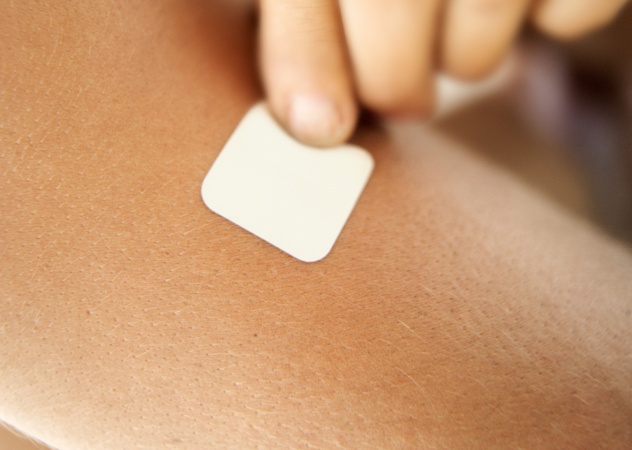 Technology
Technology  Technology
Technology  Humans
Humans 10 Everyday Human Behaviors That Are Actually Survival Instincts
 Animals
Animals 10 Animals That Humiliated and Harmed Historical Leaders
 History
History 10 Most Influential Protests in Modern History
 Creepy
Creepy 10 More Representations of Death from Myth, Legend, and Folktale
 Technology
Technology 10 Scientific Breakthroughs of 2025 That’ll Change Everything
 Our World
Our World 10 Ways Icelandic Culture Makes Other Countries Look Boring
 Misconceptions
Misconceptions 10 Common Misconceptions About the Victorian Era
 Mysteries
Mysteries 10 Strange Unexplained Mysteries of 2025
 Miscellaneous
Miscellaneous 10 of History’s Most Bell-Ringing Finishing Moves
 Technology
Technology Top 10 Everyday Tech Buzzwords That Hide a Darker Past
 Humans
Humans 10 Everyday Human Behaviors That Are Actually Survival Instincts
 Animals
Animals 10 Animals That Humiliated and Harmed Historical Leaders
Who's Behind Listverse?

Jamie Frater
Head Editor
Jamie founded Listverse due to an insatiable desire to share fascinating, obscure, and bizarre facts. He has been a guest speaker on numerous national radio and television stations and is a five time published author.
More About Us History
History 10 Most Influential Protests in Modern History
 Creepy
Creepy 10 More Representations of Death from Myth, Legend, and Folktale
 Technology
Technology 10 Scientific Breakthroughs of 2025 That’ll Change Everything
 Our World
Our World 10 Ways Icelandic Culture Makes Other Countries Look Boring
 Misconceptions
Misconceptions 10 Common Misconceptions About the Victorian Era
 Mysteries
Mysteries 10 Strange Unexplained Mysteries of 2025
 Miscellaneous
Miscellaneous 10 of History’s Most Bell-Ringing Finishing Moves
10 Man-Made Nanomaterials With Futuristic Powers
Picture an invention. You may have just imagined anything from an airplane to an iPod to the wheel itself. You probably didn’t think of innovation’s next frontier: nanotechnology. As scientific progress moves forward, scientists are increasingly inventing within a field that didn’t even exist until 1975.
The naked human eye can only see objects as small as 0.1 millimeters long. This list covers 10 human inventions on a scale 100,000 times smaller.
10 Self-Fueled Liquid Metal
A simple, liquid-metal alloy formed from gallium, iridium, and tin can be electrically controlled to form complex shapes or run laps in a Petri dish. To say it’s like the robot villain from Terminator 2 is not hyperbolic. Jing Liu of Tsinghua University, one of the researchers who worked on the project, which was based in Beijing, China, said, “The soft machine looks rather intelligent and [can] deform itself according to the space it voyages in, just like [the] Terminator does from the science-fiction film.” The metal is biomimetic, meaning it mimics biochemical reactions, though it isn’t biological itself.
Electrical currents can guide the material, but it runs under its own power, driven in part by a charge imbalance that creates a pressure differential between the front and back of each drop of the alloy. While this process is speculated to be the key to converting chemical power into mechanical power, the molecular material won’t be turning evil and robotic just yet. The entire process can only occur in a solution of sodium hydroxide or brine.
9 Nanopatches

Trypanophobes rejoice! Your days of fearing needles might be over in the near future. University of York researchers are working on a patch designed to deliver all the drugs you need with none of the needles. The normal-sized patches, once attached to the arm, deliver a targeted dose of nanoparticle-sized drugs, small enough to slip through a hair follicle. The nanoparticles, each under 20 nanometers long, will bind to harmful cells, kill them, and then be removed along with the dead cells by the body’s natural processes.
The best part? Once perfected, the nanopatch could be used to treat one of medical research’s worst disease groups: cancer. Unlike chemotherapy, the nanoparticles will be able to kill individual cancer cells, leaving the healthy ones alone. The project, titled “NanJect,” was crowdfunded in 2013 by then-student researchers Atif Syed and Zakareya Hussein and is still in development. Let’s just hope the nanopatch never gets combined with liquid metal robot technology.
8 Water Filter Coating

Remember the 2010 BP oil spill? You won’t remember similar accidents in the future, if the researchers at Ohio State get their way. The coating they are developing is just nanometers thick, but when applied to a fine-mesh stainless steel net, it strains out oil while allowing water to pass through.
The nanocoating was inspired by nature. Lotus leaves, also known as water lilies, have properties that are the opposite of nanocoating, repelling water but not oil. The lotus leaf has long been a source of scientific inspiration, having already led to the creation of super-hydrophobic materials in 2003.
For the nanocoating, scientists mimicked the bumpy surface of a lotus leaf, but embedded it with the molecules of a cleansing agent. The result repels oil like the lotus leaf repels water. The coating, invisible to the human eye, can be replicated at the cheap, cheap cost of $1 per square foot.
7 Submarine Air Freshener

No one thinks about the smell of the air that submarine crews have to breathe, except for the poor suckers who have to do just that. Carbon dioxide must be removed constantly, since the same air is passed through a new set of submariner lungs over 100 times within a single trip. A chemical called amine scrubs out the CO2, but it adds a nasty stink at the same time.
Enter the Self-Assembled Monolayers on Mesoporous Supports, or SAMMS, for those of you who enjoy giving a more human name to a combination of sand grains and nanoparticles. The new CO2 removal method uses this porous material instead of the smelly amine.
Different types of SAMMS bind with different molecules, but all of them have an immense capacity for soaking up their target. A single teaspoon holds enough pores to give it almost the same surface area as a football field. As the material’s incredibly specific application as a submarine air freshener proves, no problem is too small for science to find its solution.
6 Electricity-Steering Nanoconductor

Northwestern University researchers have figured out how to create an electricity conductor on a nanotechnological scale. It’s a solid nanoparticle that can be reconfigured to direct electrical currents in different, opposing directions. The official study cites “current rectifiers, switches, and diodes” among the electrical elements that each nanoparticle can emulate. Each 5-nanometer-wide particle is coated with a positively charged chemical and surrounded by negative atoms. The electrical charge then reconfigures the negative atoms around the nanoparticles.
The potential is amazing. The materials created “can rearrange themselves to meet different computational needs at different times,” as the University press release puts it. Using this nanomaterial, future electronics can be reprogrammed to direct electric pulses differently. Hardware could be updated as easily as software. The concept of “obsolete” technology would itself become obsolete.
The nanoscale conductor has another potential application: serving as a three-dimensional bridge between different technologies. It’s the perfect adapter, since its compatibility can be programmed. Maybe this means you won’t need to buy that new phone-charging cord after all.
5 Nano-Sponge Phone Charger

You definitely won’t need a phone cord once this invention takes off. It’s nanotechnology that works like a sponge to soak up excess kinetic power from an environment and channel it into your phone. The material in question is piezoelectric, a fancy word for material that generates electricity when under mechanical strain. The material is given nano-sized pores, turning it into a flexible sponge. The added movement allows the material to create more electricity, creating power for a device simply from the surrounding environment.
The official term for it is a “nanogenerator.” (Yes, by this point it just sounds like “nano” is being slapped in front of everything on this list. As a whole, nanotechnology researchers love doing that.) At any rate, the material could eventually be part of a cell phone’s built-in casing. The nanotech could power up while resting on a car’s dashboard or even in someone’s pocket. The concept could scale up to larger industrial environments, too. That’s what researchers at the University of Wisconsin-Madison hope.
4 Artificial Retina

The future of artificial eyesight is so bright that you’ll need to wear shades . . . or a nanofilm designed to mimic your retina. Israel-based Nano Retina is developing an interface that directly connects to an eye’s neurons to convey neural simulation to the brain, replacing the retina and helping people to see. So far, an experiment on a chick has proven successful, with neural activity proving that the nanofilm let the chick see light that it otherwise wouldn’t have. But the would-be retina has a long way to go before reaching its ultimate goal of enhancing human eyesight.
Nano Retina isn’t the only artificial eyesight in the game, but it appears to be the most durable, efficient, and flexible. That last one’s essential, given that the final product will be inside someone’s eye. Similar inventions have found that part to be the toughest aspect of artificial-eye technology. At least, since it’s developed on the nanoscale, the technology avoids nasty problems like metal, wires, and low resolution.
3 Glowing Clothes

Light-emitting fibers are being developed by Shanghai researchers, and they could be woven into articles of clothing. Finally, you’ll have something to wear when you want to match the decor at an 1980s neon nightclub. Each fiber starts from a stainless steel wire foundation, which is then covered by a certain nanoparticle, a layer of electroluminescent polymer, and a safety coating of transparent nanotubes. The resulting fibers are both lightweight and flexible and can glow entirely under their own electrochemical power. Better yet, they run on less power than conventional LED lights.
The downside is that the fibers’ light only lasts for a few hours. However, the developers are optimistic that their Frankenstein creation will eventually last 1,000 times longer, and there’s nothing in theory that will stop them. Even once they’re ready to go, the nanoparticle-powered clothes might not be washable. Researchers also hope that the biomedical benefits can be explored. Still, items that are washed infrequently, like safety vests or baseball caps, are still awesome when they’re glowing by themselves.
2 Organ-Repairing Nanoneedles

The drug patch mentioned earlier was designed to replace needles, but what if the needles themselves were nano-sized? Then, apparently, they could replace surgery, or at least supplement it. Recent, successful trials on lab mice managed to inject nucleic acids, which can spur organ and nerve cells to regenerate, regaining lost abilities. Once their mission is complete, the needles stay inside the body, biodegrading within a couple of days. No harmful side effects were noted when the needles were used to form blood vessels in the back muscles of the mice.
If applied to humans, the nanoneedles that deliver the acids could be injected into patients during organ transplants, better preparing the tissues around the organ to heal and integrate the newcomer into the body. Another cool application for the doses might be “reprogramming” the cells of a burn victim to regrow as functioning and healthy, rather than scarred.
1 3-D Chemical Printer

This final entry isn’t just a single particle; it’s a 3-D printer capable of churning out thousands of different ones. University of Illinois chemist Martin Burke is like a chemical Willy Wonka. Using a collection of “building block” molecules, he can create a large number of different chemicals with a wide range of “extraordinary natural properties,” such as ratanhine, found only in a rare Peruvian flower.
The scope of the synthesis is large enough to provide molecules needed for medicines, LEDs, and solar cells and includes some chemicals that could have previously taken a trained chemist years to synthesize. The current prototype is limited, but even now, it is capable of developing new drugs. Burke hopes to eventually create a consumer version. Here’s hoping the future includes a printer as a home pharmacist.
Adam Rowe is the creator and curator of ’70s Sci-Fi Art, a Tumblr featured by Metafilter, io9, and Boing Boing. He splits his freelance research time between finding bizarre science facts and bizarre science fiction, documenting it all. You can find him on Twitter at @AdamRRowe.








